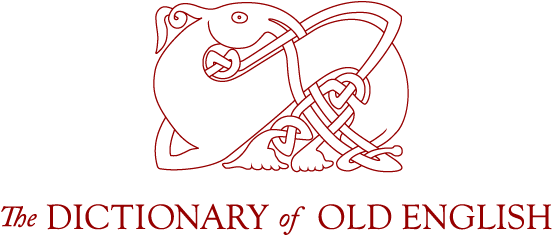The Dictionary of Old English Has Reached the Letter I

Earlier this year The Dictionary of Old English team announced the publication of the “Dictionary of Old English: A to I” online. In addition to new entries for the letter “I,” the “DOE: A to I” has added new headwords to some of the previously published fascicles.
The Dictionary of Old English (DOE) is the most exhaustive study of the Old English language to-date. The DOE was started at the end of the twentieth century with the first publication (letter A) appearing in 1994. The project aims to provide an examination of all English vocabulary from the seventh through the mid twelfth century (C.E. 600-1150). Upon completion the DOE will form part of a trilogy of reference works with the Middle English Dictionary (covering C.E. 1100-1500) and the Oxford English Dictionary that together will cover the entire development of English vocabulary.
Although the DOE has an old subject matter it has implemented modern technology in innovative ways. The DOE is one of the first dictionaries to compile an electronic corpus of sources. The database contains a digital copy of every known Old English texts including inscriptions in stone and on jewelry. From this the contributors have undertaken to produce an entry for every word in the Old English texts.
Highlights of the fascicle “I” include the preposition in (‘in, on’), a high-frequency word with approximately 11,000 occurrences, “ic,” another high-frequency word with approximately 45,000 occurrences, many compounds starting with “īsen/īsern/īren” (‘iron’), “igil” (‘hedgehog’), and the ever mysterious crux “? icge” from Beowulf.
The DOE is a collaborative effort run out of the University of Toronto. Its advisory committee consists of members from multiple nations including Canada, the United Kingdom, the United States, and Germany.
Individuals with library privileges at Notre Dame can access the DOE online.